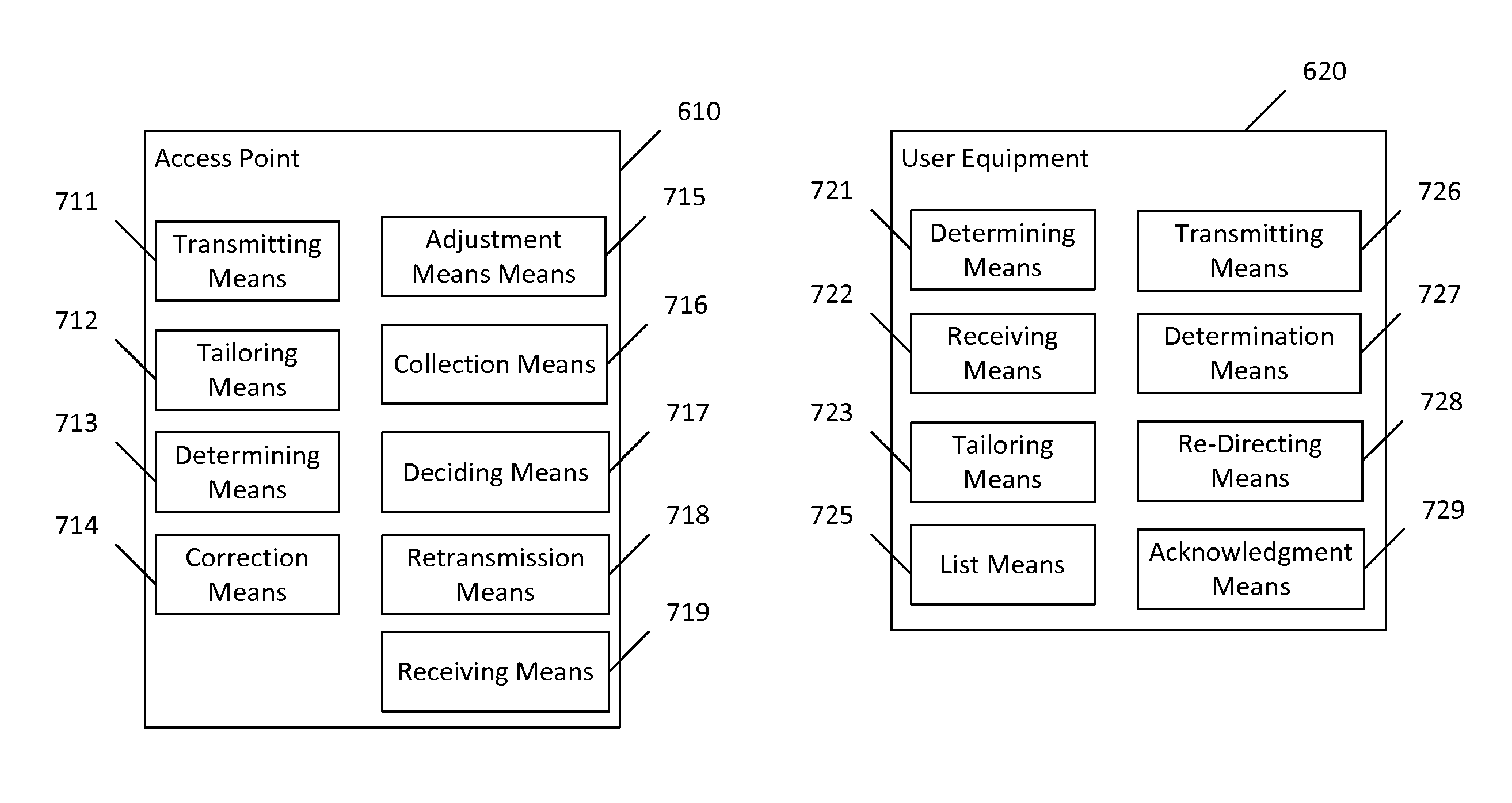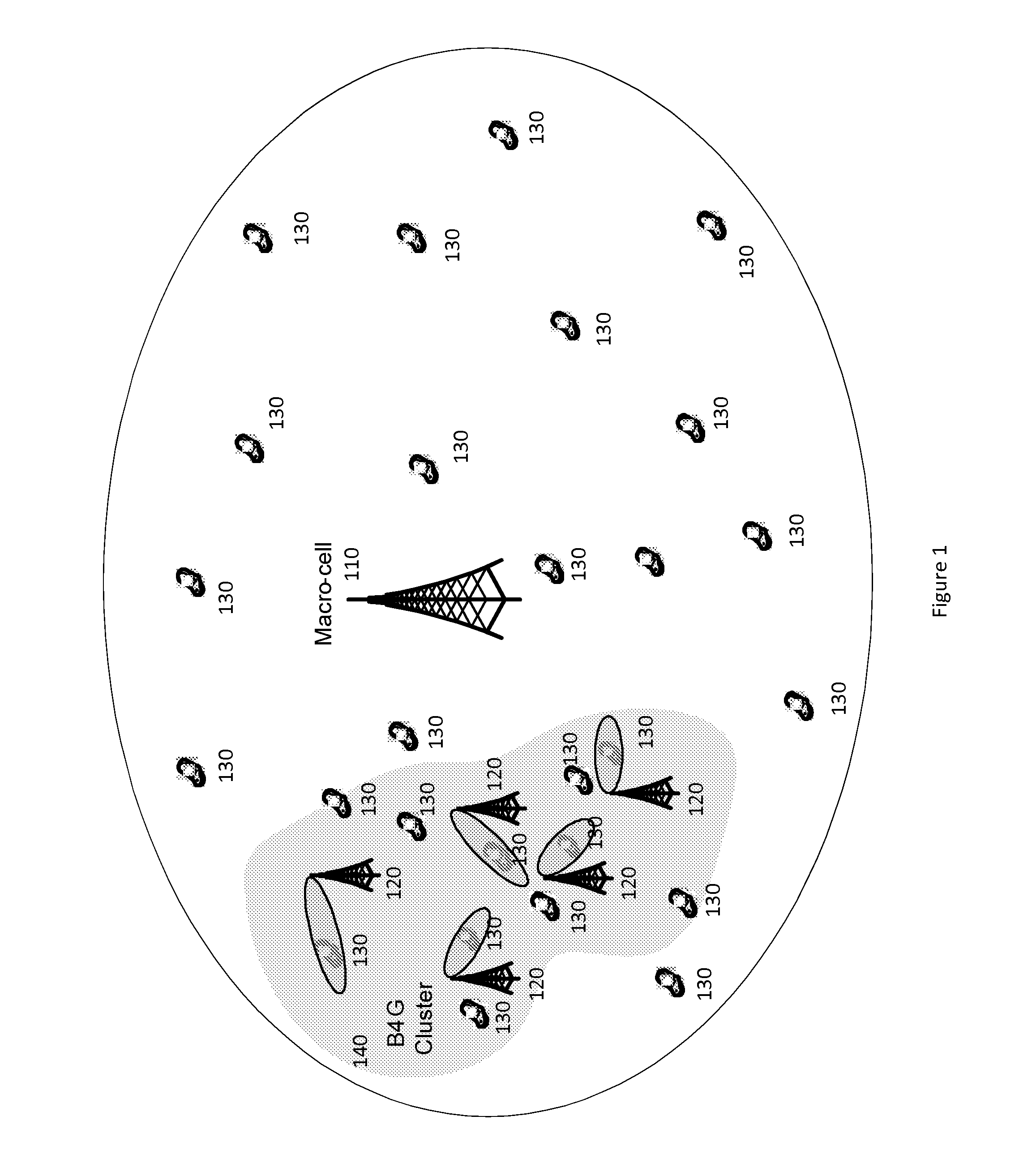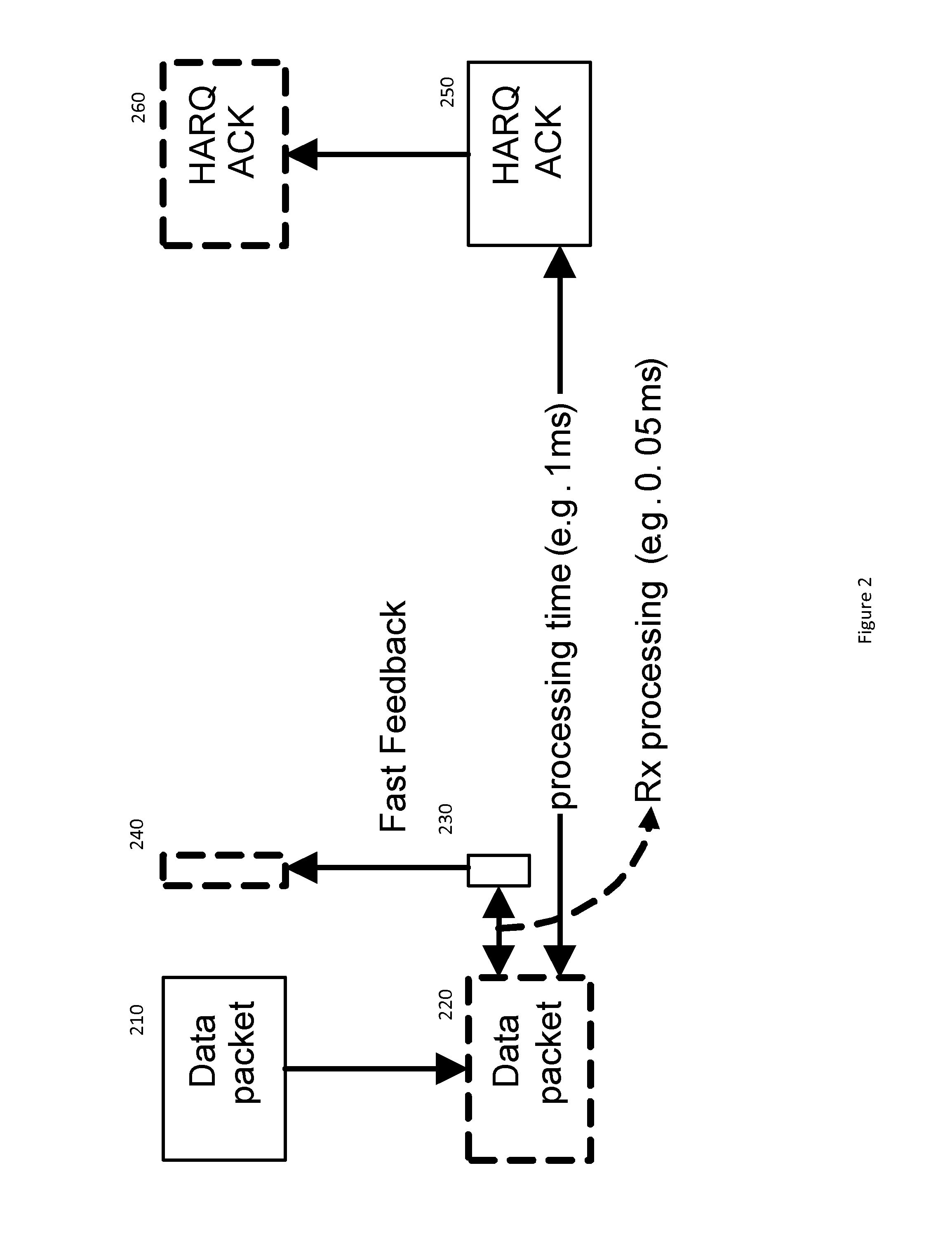Method, apparatus, computer program product, computer readable medium and system for fast feedback and response handling in wireless networks
a wireless network and feedback technology, applied in the field of communication systems, can solve the problems of not being able to improve, adding spectrum, but also eventually outpacing the demand, and limiting the available spectrum below 6 ghz, so as to reduce modulation and coding schemes, increase the spreading factor, and increase the repetition factor
- Summary
- Abstract
- Description
- Claims
- Application Information
AI Technical Summary
Benefits of technology
Problems solved by technology
Method used
Image
Examples
Embodiment Construction
[0085]In mmWave access, a set of co-operating access points or “cluster” of access points, can be deployed to cover an area, for example, a 100 meter radius. A cluster can be used because mmWave may be subject to high shadowing loss and low diffraction, such that each individual coverage area contains multiple shadow regions where radio communication is not supported. Cooperating cluster nodes can be arranged such that these shadowed regions are covered from a unique propagation direction As a result, a user may be covered by multiple access points within the cluster. In addition to mmWave access, LTE in macro-cell type deployment can also be deployed to provide coverage outside the area covered by mmWave access. FIG. 1 illustrates mmWave access deployment and LTE overlay.
[0086]As shown in FIG. 1, a macro-cell 110 may comprise a plurality of access points 120 and numerous user equipment 130. A B4G Cluster 140 may comprise a plurality of the access points 120.
[0087]Rapid re-routing o...
PUM
 Login to View More
Login to View More Abstract
Description
Claims
Application Information
 Login to View More
Login to View More - R&D
- Intellectual Property
- Life Sciences
- Materials
- Tech Scout
- Unparalleled Data Quality
- Higher Quality Content
- 60% Fewer Hallucinations
Browse by: Latest US Patents, China's latest patents, Technical Efficacy Thesaurus, Application Domain, Technology Topic, Popular Technical Reports.
© 2025 PatSnap. All rights reserved.Legal|Privacy policy|Modern Slavery Act Transparency Statement|Sitemap|About US| Contact US: help@patsnap.com



